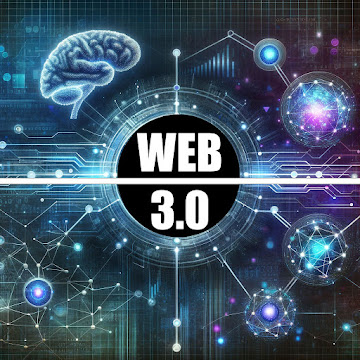The dawn of Web 3.0 marks a significant leap in the evolution of the Internet, heralding a new era of digital interaction and connectivity. This progressive phase transcends traditional online experiences, offering a glimpse into a future where the internet is more intelligent, intuitive, and user-centric. Unlike its predecessors, Web 3.0 paves the way for a decentralized, secure, and efficient web, fundamentally transforming our interaction with digital content and services.
Web 3.0's emergence is a testament to the relentless pursuit of technological advancement and innovation. It's an amalgamation of cutting-edge technologies, including blockchain, artificial intelligence (AI), and the Internet of Things (IoT), each playing a crucial role in sculpting a more dynamic and interactive web. This new web era promises to deliver more personalized, seamless, and secure online experiences, significantly impacting various sectors and reshaping the digital landscape.
What is Web 3.0?
At its core, Web 3.0 represents a paradigm shift in how the Internet is structured and utilized. It's an intelligent and open web where machines understand data like humans, enabling a more personalized and intuitive user experience. Unlike Web 1.0, characterized by static information pages, and Web 2.0, marked by user-generated content and social media, Web 3.0 introduces a decentralized, semantic web.
This new web generation leverages AI, machine learning, and blockchain technologies to facilitate direct peer-to-peer interactions, bypassing intermediaries. For instance, decentralized applications (dApps) run on blockchain networks, allowing for transparent and secure digital transactions. Examples include platforms like Steemit, a blockchain-based blogging and social media website, and OpenBazaar, a decentralized marketplace.
Conceptualization of Web 3.0
The conceptual roots of Web 3.0 can be traced back to John Markoff's 2006 New York Times article, where he first used the term to describe the next web phase. However, the foundational concept of a semantic, interconnected web was laid down by Tim Berners-Lee. He envisaged a web where machines link and understand data in a semantic context, facilitating richer and more relevant user experiences.
Berners-Lee's vision of the semantic web forms the backbone of Web 3.0. It allows data to be shared and reused across applications, enterprises, and community boundaries, enabling machines to interpret web content with human-like understanding. This advancement is evident in AI-driven personal assistants like Siri and Alexa, which interpret user requests and provide relevant, contextual information.
Web 3.0 Today
Today, Web 3.0 is steadily gaining ground, redefining the boundaries of digital interaction and data management. Integrating blockchain technology has been a game changer, especially regarding data security and decentralization. Cryptocurrencies like Bitcoin and Ethereum are prime examples of blockchain applications, providing a secure, decentralized framework for digital transactions.
In addition, AI and machine learning are revolutionizing user experiences. Companies like Netflix and Amazon use personalization engines to analyze user preferences to recommend products or content, showcasing Web 3.0's ability to tailor digital experiences to individual users. Moreover, the rise of dApps across various sectors, from finance to social media, is a testament to the growing influence of Web 3.0 in our daily lives.
The Future of Web 3.0
The potential of Web 3.0 extends far beyond its current state, promising revolutionary changes across various sectors. In finance, the advent of decentralized finance (DeFi) platforms is set to democratize financial services, providing more inclusive and accessible financial solutions. For instance, platforms like MakerDAO allow users to lend and borrow cryptocurrency without traditional banking intermediaries.
Web 3.0 could herald a new era of digital rights and user empowerment in social media and content creation. Platforms like Brave browser and its Basic Attention Token (BAT) are redefining how online content is monetized and consumed, prioritizing user privacy and fair compensation for content creators. Similarly, blockchain technology can provide unprecedented transparency and traceability in supply chain management, as seen in IBM's Food Trust network, enhancing food safety and sustainability.
Monetization in Web 3.0
Monetization in Web 3.0 is uniquely characterized by its user-centric and decentralized approach. Unlike the ad-driven revenue model predominant in Web 2.0, Web 3.0 offers innovative monetization methods that empower users and creators. Cryptocurrencies and tokens are pivotal in this new monetization landscape, facilitating direct compensation for content creators and service providers.
For example, in Web 3.0, content creators can receive direct payments in cryptocurrencies or tokens for their work, bypassing traditional advertising models. This is evident in platforms like Brave, where users earn BAT tokens for viewing ads, and creators get compensated in BAT for their content. Furthermore, NFTs (non-fungible tokens) introduce a novel way for artists and creators to monetize digital art and assets, providing proof of ownership and authenticity on the blockchain.
Conclusion
Web 3.0 is more than a technological evolution; it's a paradigm shift in how we perceive and interact with the internet. With its emphasis on decentralization, intelligence, and user empowerment, Web 3.0 is paving the way for a more secure, efficient, and personalized digital experience. As we navigate this new digital era, it's imperative to embrace and adapt to these changes, recognizing the vast potential of Web 3.0 to reshape our digital interactions and redefine the internet landscape for years to come.












0 Comments